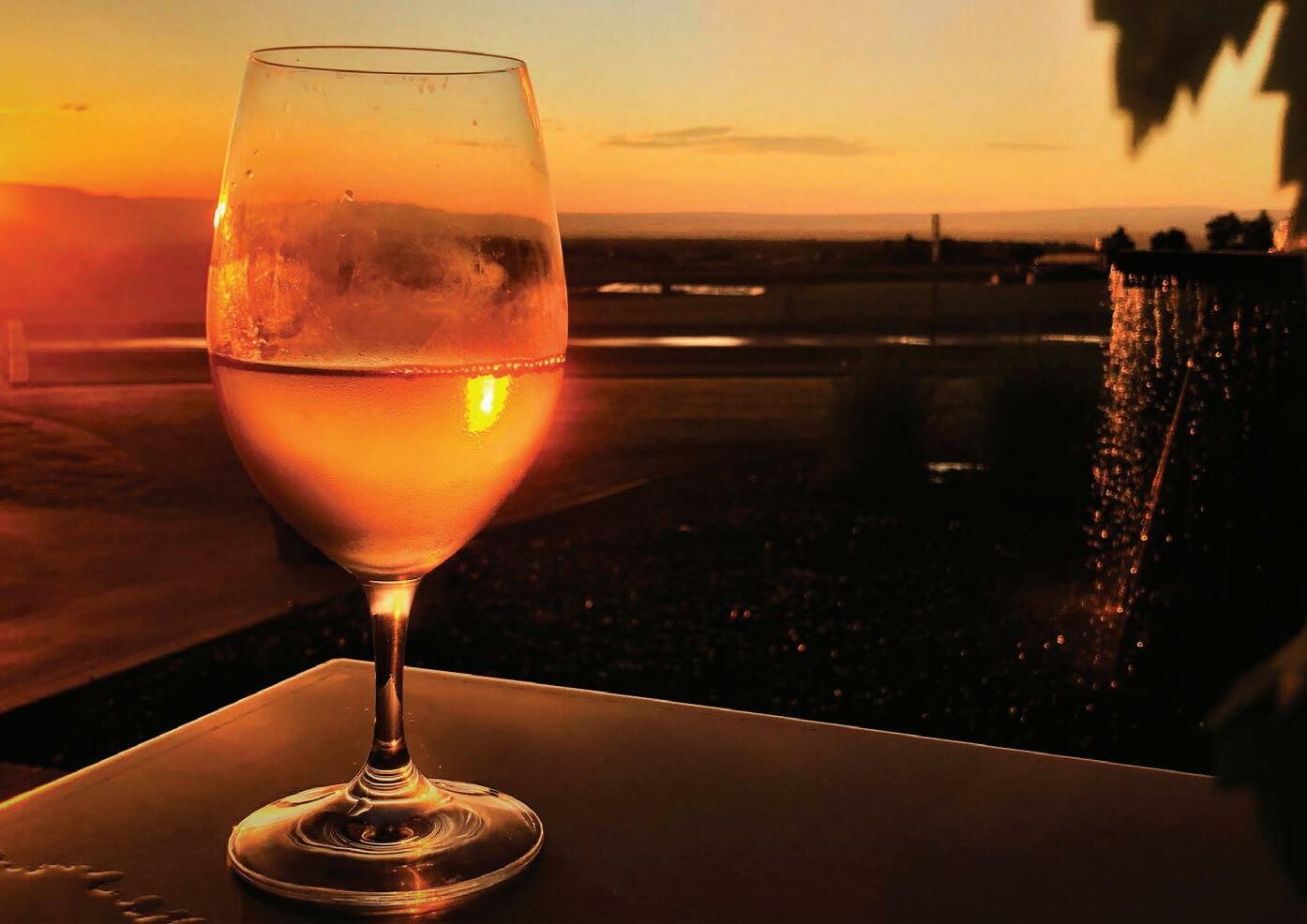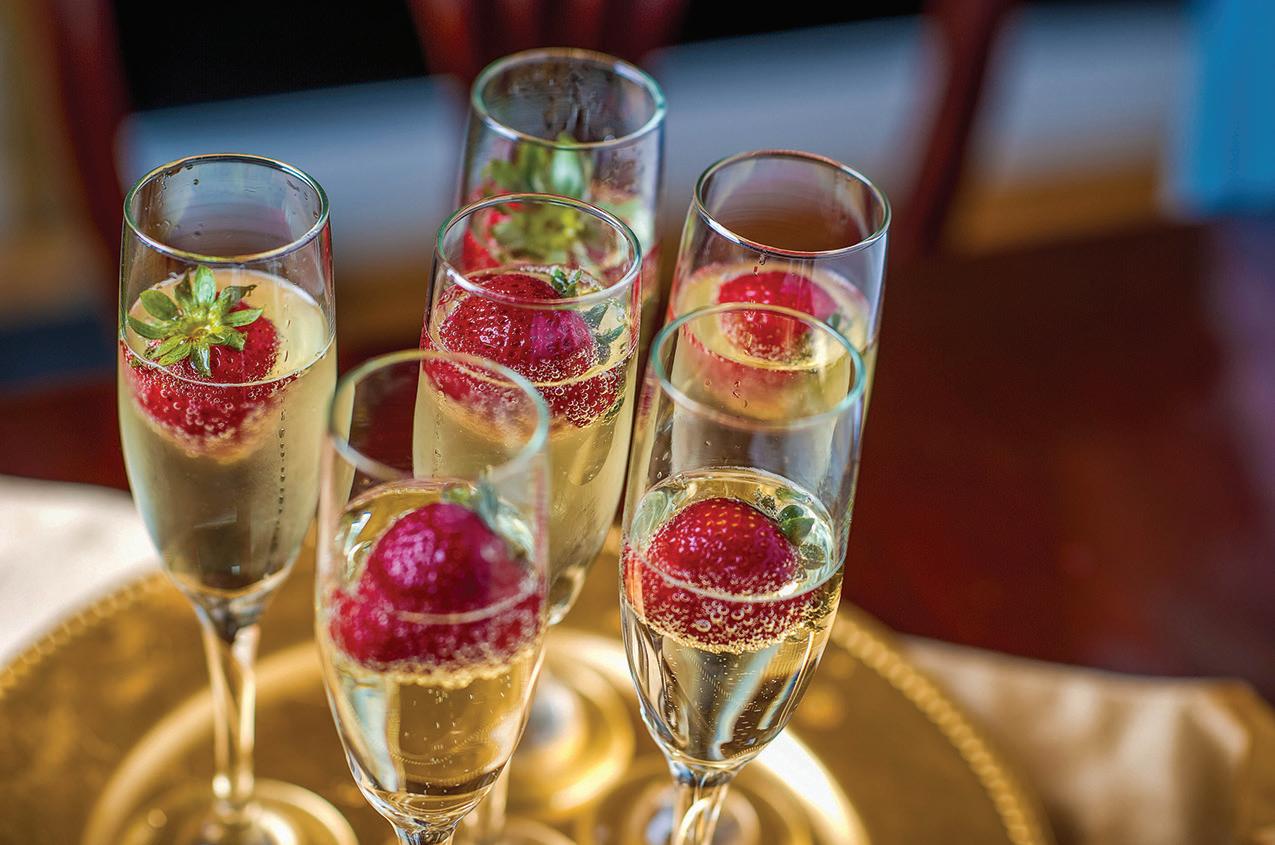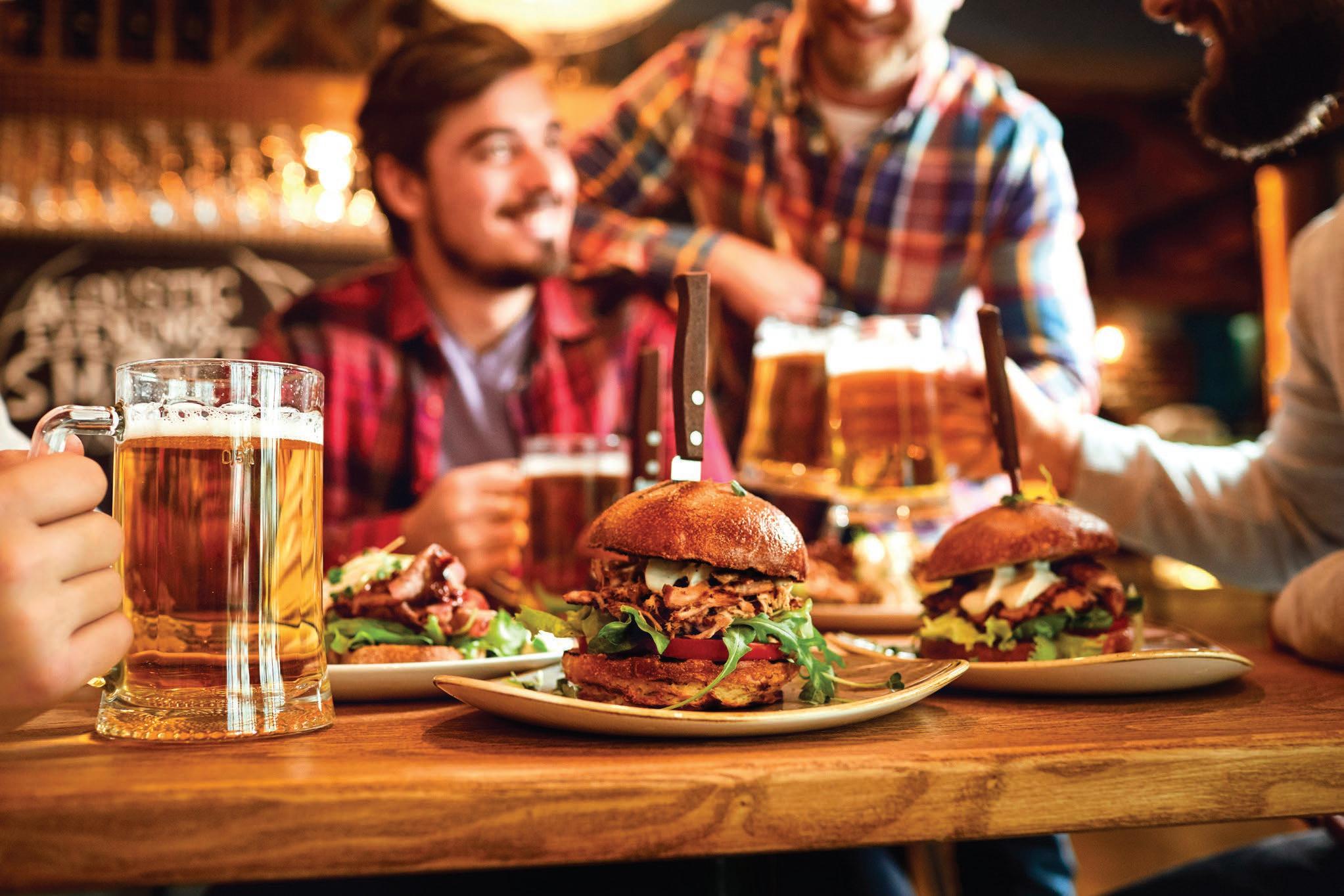






The flourishing craft beer movement has made it chic to choose beer as the social drink of choice. And the rise of microbreweries in towns across the globe has led to an array of beers crafted with unique production techniques, resulting in beverages with unique aromas and nuanced flavors.
To further enhance the beer-drinking experience, enthusiasts may give more thought to the glasses their beers are in. Much in the way that certain foods and beverages go together, choosing the right glassware in which to serve a favorite beer can affect its flavor.
According to Inverse, an American digital media company covering topics in culture, technology and science, there are many different glassware manufacturers touting that beer is better in the right glasses. In fact, Riedel, the Austrian glass manufacturer
that pioneered the concept of wine-enhancing glasses, recently turned its attention to the beer market. The company’s Spiegelau brand launched a special line of beer glasses, each custom built to enhance particular varieties of beer.

The concept behind beer glasses is that the dimensions of the vessel can impact how the beer is experienced via the senses. The right glassware can highlight the notable aspects of certain varieties of beer. For example, Henry Lau and Rik Sargent of Physics.org’s Cheers Physics explained that, with fizzy beers, a thin, pilsner-style glass can be ideal. Such a glass will cause less liquid to come in contact with the bottom of the glass, causing a smaller head. In other instances, glasses with a tapered top will control how bubbles burst in the head of beer, concentrating the aroma and forcing the drinker’s nose closer to the beer.
Spiegelau’s IPA glass has a ridged base that helps agitate hops back into suspension. Its barrel-aged glass features a tulip bowl that focuses complex flavors similar to a wine glass.
Another glass innovator, the Rastal brand developed a universal beer glass called the TeKu that is inspired by wine glasses but features sharper contours and a flared lip. The style is designed to focus aromas, with the rim increasing turbidity as the beer flows to the lips and forces out the carbonation.
There are no rules governing which glasses to use when serving beer, but there’s certainly a movement for speciality beer glassware. For those who are not ready to overhaul their beer glass collection just yet, these general recommendations can enhance the beer experience:
• Mug: Stouts and porters
• Pint glass: American lagers
• Tulip glass: Belgian Abbey-style beers, barrelaged, fruited beers and high-ABV beers
• Cerveza Pilsner glass: Pilsners, helles and Vienna lagers
• Classic pilsner: Sour beers, pilsners
• Pub glass: Stouts, porters, ales, ambers, and moderate-ABV beers
• Revival beer glass: IPAs


New brewers have many lessons to learn as they navigate the exciting world of brewing.
Sanitation may not be the most exciting aspect of brewing, but it’s definitely one of the most important. Learning how to properly sanitize brewing equipment can go a long way toward helping brewers avoid contamination and spoiling the flavor or the beer batch altogether.
Why is sanitation so important? It’s not simply to ensure that the finished beer is safe to drink. It has a lot to do with flavor as well. The brewing resource Craft Beer & Brewing magazine says that brewers want to ensure that every surface or item that touches the beer is free of microbial wildlife. Wild yeast or bacteria can enter the wort or finished beer and can impact the brewing process, greatly affecting the flavor of the finished product. Brewers only
want the yeast they introduce into the process to be active.
Generally speaking, everything “on the cold side” of the brewing process should be sanitized. Items that will be boiled with the wort may be sanitized enough during the actual boil.
Quite often home brewers mistake cleaning for sanitizing. While both are important, cleaning is merely a method for removing caked-on debris or other dirt and deposits on which microorganisms can attach and develop. Removing these deposits during cleaning is the first step. Sanitizing will effectively kill off any other microorganisms not actively added during the brewing process.
There are several ways to achieve sterilization. One of the most readily available is heat. Microorganisms are killed when heated at a high enough temperature for a long enough
time. Boiling and steaming can sanitize equipment, as can using dry heat ovens.





The second most affordable method is using bleach in a homemade sanitizing solution of one tablespoon of bleach to one gallon of water. Items should soak for roughly 20 minutes and then be drained and rinsed. Some brewers are hesitant to use bleach, but rinsing thoroughly with boiled water can reduce the chances for offflavors from the chlorine.
Chemical commercial products are widely available and effective. The brand Star San¨ is an acidic sanitizer

made especially for brewing equipment. When applied at recommended levels, it will not contribute to off-flavors, offers the brewing resource How to Brew. The solution can be put in a spray bottle for easy application. Iodophor is another solution that is made from iodine. Brewers can speak with a brew shop about other products that make sanitizing easy.
Ensuring all surfaces and equipment that will be involved in beer-making are clean and sanitized takes effort, but the reward is great-tasting beer.

No New Year’s Eve celebration would be complete without a champagne toast to ring in the new year. Champagne is a vital component of many special occasions, such as anniversaries, retirement parties and weddings.

Champagne is a sparkling wine from the Champagne region of France, though the term “champagne” is often mistakenly used in reference to any type of bubbly.
Champagne is a wine and, like merlot or pinot grigio, it has specific storage and serving temperatures to ensure top flavor. According to ThermoWorks, wines have
specific layers of flavor that are most effectively enjoyed when they’re experienced at the proper temperature. In wine, temperature affects alcohol, acid and aromatics. ThermoWorks suggests a temperature of 45° F for champagne.
In addition to controlling temperature, there are other ways to help ensure champagne reaches the palate in optimal fashion. Grape Escapes, a wine tasting and touring company, says that champagne is already aged properly before being sold, so it does not necessarily benefit from extra aging in the bottle. When kept too long (beyond 10 years for vintage cuvées), some
effervescence may be lost and the flavor will change.
Bottles of champagne should be stored horizontally in a well-chilled environment. They should be kept away from bright or artificial light. Chilling also will help reduce the “pop” and overflow of the bubbly. If you purchase champagne and need to chill it for serving, you can achieve this by either chilling it in the fridge for three hours before serving, or in a Champagne bucket in a mixture of ice and water for 30 minutes.
Etiquette experts say it is preferable to open a bottle of champagne with a hiss rather
than a large pop. To achieve this, chill the champagne and also open the bottle very slowly and with a great deal of control.
When the champagne is opened, Daniel Brennan, PR and communications director at Champagne Laurent-Perrier, advises taking your time pouring a little champagne into each glass to allow the bubbles to settle. Then return to the first glass to pour more, helping to make the champagne less likely to froth. Do not tilt the glass like pouring a beer, rather pour the champagne gently down the inside of the glass.
The shape of the glass comes down to preference. Traditional coupes look the part, but tulipshaped flutes will produce more bubbles and help capture the flavor and aromas of the champagne.
It’s ideal to drink all of the champagne in a bottle, as it will begin to lose its fizz immediately after opening, yet that isn’_t always possible. A specialized champagne stopper will help keep the champagne fresh for up to two days after opening. Aftering the bottle has been opened, refrigerate it.
Do not wash champagne glasses in the dishwasher. Hand wash and allow to drip dry. Soap or fibers from towels can impede bubble formation in the glass during subsequent pourings.
Learning how to properly store and serve champagne can enhance special occasions.
 By: Metro Editorial
By: Metro Editorial



The rise of craft breweries and niche wineries has probably caught the attention of those who like beer or wine.



The Brewers Association says two breweries open per day in America and three-quarters of Americans of legal drinking age live within 10 miles of at least one brewery. Establishments have popped up in neighborhoods across the country, and many inspire a new crop of enthusiasts who want to try crafting their own brews and vintages at home.
Home brewing has been done for centuries. In fact, both George Washington and Thomas Jefferson were home brewers. Just a few years ago, home brewing - particularly of beer - started surging across the United States. The American Homebrewers Association reported the number of U.S. homebrew shops peaked at 820 in 2016. As more people discover the ease and creativity involved with brewing their own beer and wine, there’s a strong chance more home brewers will be born.
Anyone looking to jump into home brewing will find there are many resources at their disposal. Brew shops are now in many towns, and they can provide space, equipment and resources to help novice brewers get on track.



For those who find local resources are limited, brewing supplies and advice can be located in abundance online. Retailers such as Northern Brewer, for example, provide items that can be purchased a la carte or in specially designed beginner kits. As individuals become more experienced with brewing, they can vary the ingredients and experiment with their own flavors.

Both beer and wine are fermented using yeast. There are many different varieties of yeast that perform well in beers and wines. Temperature and sanitation are very important to the brewing process. To ensure quality beverages, all items need to be thoroughly sanitized to prevent natural yeasts and contaminants from impacting taste. Ambient temperature can influence how fast the product will ferment and the final flavor.
Brewing wine or beer at home can be a rewarding hobby. People can learn how to turn ingredients into flavorful alcoholic beverages, socialize with others who share the same interests and produce beverages that align with their individual tastes.
 By: Metro Editorial
By: Metro Editorial
The craft beer boom has inspired millions of people to look at beer through a new lens. Once relegated to backyard barbecues and ballgames, beer is now served alongside gourmet meals. Much like the right wine can make a meal taste even better, beer can bring out the flavors of food, making it an ideal complement to anything from steak to seafood to salad.
The Brewers Association is an American trade group whose membership consists of more than 5,400 brewers, suppliers and retailers. The group recommends beer lovers follow a three-pronged approach to matching beer and food. ItÕs worth noting the BA does not view this approach as a 1-2-3 process, meaning beer lovers need not follow the steps in order to perfect their pairing skills.
1. Match strength with strength. The BA recommends pairing strongly flavored foods with assertive beers and delicate foods with delicate beers. For example, a relatively low alcohol witbier should pair well with light seafood like steamed mussels. Beer lovers who enjoy strong barley wines, which are typically 10 percent alcohol by volume (ABV) or higher, should find that a strong cheese or dessert matches up well with this overpowering style.
2. Find harmonies. The BA notes that beer-food combinations typically resonate most effectively when they share some common flavor or aroma element. The BA points to how the deep, roasted flavors of an imperial stout often pair nicely with chocolate truffles.
3. Consider sweetness, bitterness, carbonation, heat (spice), and richness. The BA recommends that beer lovers look to take advantage of the specific and predictable ways that certain qualities of food and beer interact with each other. For example, malty sweetness can cool the heat, making a hoppy beer with plenty of malt a good choice to pair with spicy food.
Pairing the right beer with food can make any night out on the town that much better.

Want to pair your favorite craft beers like an old pro at home or at your local pub with an extensive tap list? Consider these pairing recommendations, courtesy of the Brewers Association.
. Witbier: Lighter seafood dishes like steamed mussels
. Blonde ale: Light food, including chicken, salads and salmon
. India Pale Ale: Strong spicy food and bold, sweet desserts like carrot cake
. Double/Imperial IPA: Smoked beef brisket, grilled lamb and southern chicken-fried steak
Amber/red ale: Chicken, seafood, burgers, and spicy cuisine

. Porter: Barbecue, sausages, roasted meat, and blackened fish
. Sweet or Oatmeal stout: Rich, spicy food, including barbecued beef and Szechuan cuisine
. Classic pilsner: Light food such as chicken, salads and salmon
. American wheat ale: Very light food, including salads, sushi and vegetable dishes
. Abbey dubbel: Barbecue, meat stews, and a thick, hearty steak
Beer is beer, right? Not quite. There are many different types of beer, and each beer lover has his or her favorite style when visiting a craft brewery, bar or nearby beer retailer.


Stout is one type of beer that has an extensive following, and is frequently consumed on St. Patrick’s Day and at Irish pubs.

The beer information site Just Beer describes stout as a dark style beer. Stouts are typically rich and dark in color. Their flavor is described as coffeelike or chocolately. Stouts have a distinctive smooth, creamy texture that differs from most other beers.
Stout was first documented in the 17th century and was a




term used to describe a very strong beer. Dark beers called porters were very popular at the time and brewers began experimenting with porters of different strengths. Those containing roughly seven or eight percent alcohol by volume, among the strongest porters, were known as stout porters. However, it would take quite a while for these porters to be known only as stouts. Even one of the world’s most recognizable stouts, Guinness, was once called a porter.
Stouts are distinguishable from porters in their ingredients. Porters use roast malted barley, according to Renegade Brewing. Stouts are made from black patent malt. Stouts are further classified
into “milk” or “dry” stouts. Milk stout is a stout sweetened with lactose. Dry stouts are more bitter. Stouts also may be named as chocolate stout, oyster stout or oatmeal stout, depending on the ingredients used in the brewing process.
Stouts are dark, rich and potent beers.
Many people toast with stouts on St. Patrick’s Day.
